Dealing with Bullying: Helping Parents and Children
Bullying is an unfortunate reality for many children, and as parents, it's heart-wrenching to see our kids go through it. When dealing with bullying, the best way to find a solution for these situations is to work together with your child.
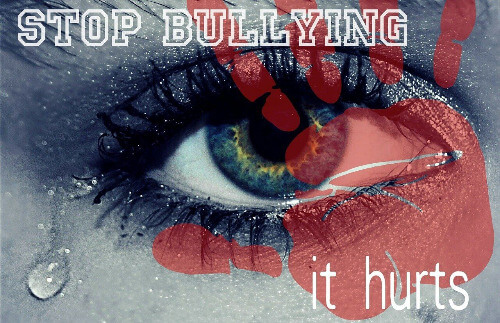 A large eye with tear and red hand print on it. With the words on it saying: "Stop Bullying - it hurts."
A large eye with tear and red hand print on it. With the words on it saying: "Stop Bullying - it hurts."Understanding Bullying
First, let's understand what bullying is.
It is aggressive behaviour from one person intended to hurt another person, whether physically or emotionally and in most cases it is repetitive.
It can take many forms, including:
- Physical Bullying: Hitting, kicking, or any physical harm.
- Verbal Bullying: Name-calling, insults, or teasing.
- Social Bullying: Excluding someone from their group, embarrassing someone in public or spreading rumours.
- Cyberbullying: Using digital platforms to harass, threaten, or humiliate.
Recognizing these signs is the first step in dealing with bullying. You need to be alert to any changes in your child’s behaviour or mood.
Signs Your Child Might Be Bullied
It's often difficult for kids to talk about bullying.
Look out for these signs:
- Unexplained injuries or damaged belongings.
- Frequent headaches or stomach aches, feeling sick often.
- A change in eating habits, such as suddenly skipping meals, anorexia or binge eating.
- Difficulty sleeping or frequent nightmares.
- Declining grades or loss of interest in schoolwork.
- They will avoid social situations and start losing friends.
- Feelings of helplessness or decreased self-esteem.
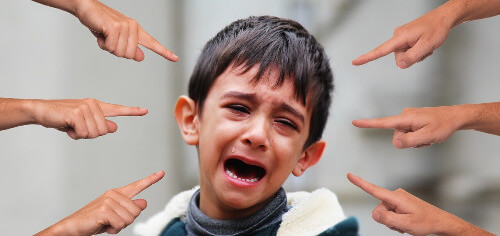 Young boy crying with 6 hands pointing at him as if blaming him for something or bullying him.
Young boy crying with 6 hands pointing at him as if blaming him for something or bullying him.If you notice any of these signs, gently approach your child and offer your support. Talking to your kid is critical in dealing with bullying.
Starting the Conversation When Dealing with Bullying
Talking about bullying can be tough, but it's essential.
How to help you start the conversation:
- Create a Safe Space: Be sure that your child feels safe and comfortable. Choose a quiet moment where you won't be interrupted.
- Be Empathetic: Show empathy and understanding. Let your child know that you believe them and that it's not their fault.
- Ask Open-Ended Questions: Encourage your child to talk by asking questions like, "Can you tell me more about what's been happening?" or "How does that make you feel?"
- Listen Actively: Pay attention to what your child says. Avoid interrupting them and show that you care by nodding and maintaining eye contact.
Providing Emotional Support
Emotional support is vital in dealing with bullying.
Try the following:
- Validate Their Feelings: Accept and let them know that it’s understandable to be scared or angry.
- Reassure Them: Assure your child that you are there for them and will help them through this. Remind them that they are not alone.
- Boost Their Self-Esteem: Encourage activities that build confidence and self-worth. Praise their strengths and achievements, no matter how small.
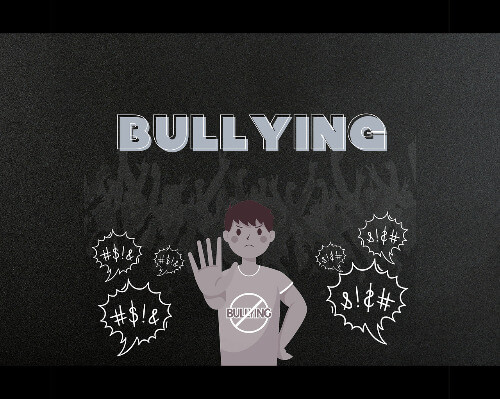 Boy standing and holding right hand up to indicate stop, with a Bullying sign above him.
Boy standing and holding right hand up to indicate stop, with a Bullying sign above him.Practical Steps to Take
Besides emotional support, there are practical steps you can take to help your child deal with bullying:
- Document Incidents: Be sure to write up all bullying incidents along with dates, times, locations and the details of what happened. Doing this will help when you discuss the issue with the authorities at school.
- Report to the School: Contact your child's teacher, school counselor, or principal. Now is a good time to share those records that you kept of the bullying incidents so that you can work together and create a plan to address the bullying.
- Teach Coping Strategies: Assist your child in developing ways to deal with bullying. Teach them to stay calm, use assertive body language and get help from trusted adults.
Building Resilience
Building resilience can help your child cope with bullying more effectively.
Encourage these practices:
- Positive Self-Talk: Teach your child to think positive rather than having negative thoughts. For example, instead of thinking, "I'm worthless," they can think, "I am strong and capable."
- Problem-Solving Skills: Help your child develop problem-solving skills by brainstorming possible solutions to bullying scenarios and practicing them.
- Healthy Friendships: Encourage your child to build and maintain healthy friendships. Having good friends to support them and just be there for them, makes it harder for bullies to isolate them.
When to Seek Professional Help
Sometimes, bullying can have severe emotional and psychological effects that require professional help.
Consider therapy for your child if they begin to show signs of any mental health issues. They can suggest coping strategies and teach your child how to express their feelings.
Empowering Your Child
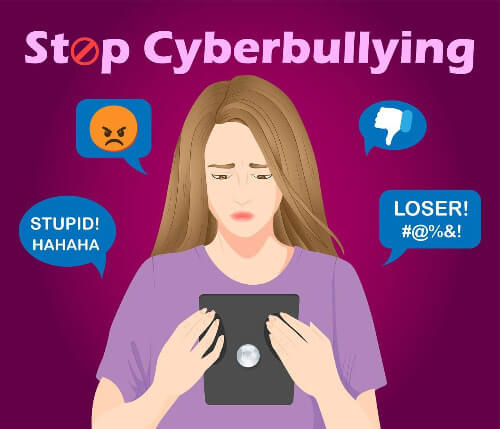 Young girl looking at her ipad and looking sad at what is being said: Stupid, loser, etc. Above her is the words: Stop Cyberbullying.
Young girl looking at her ipad and looking sad at what is being said: Stupid, loser, etc. Above her is the words: Stop Cyberbullying.Teach your child to:
Stand Up for Themselves: Encourage them to assertively, but calmly, tell the bully to stop.
Seek Help: Remind them that it's okay to seek help from teachers, parents, or friends when they feel threatened.
Avoid the Bully: If possible, help them find ways to avoid the bully and stay in safe, supervised areas.
For the Parents
Dealing with bullying can be incredibly stressful for anyone.
It's essential to take care of yourself too:
- Stay Calm: Your child will look to you for guidance so stay calm and set a positive example.
- Seek Support: Talk to other parents, join support groups, or seek professional advice if you feel overwhelmed.
- Stay Informed: Learn all you can about bullying and stay informed about your child's school policies and procedures regarding bullying.
Creating a Supportive Environment
When your child knows that their home environment is supportive it will help them to feel secure and valued.
- Open Communication: Foster an environment where open communication is encouraged and your child can talk to you about anything.
- Family Time: Spend quality time together as a family, participate in activities that your child enjoys.
- Positive Role Modeling: Be a positive role model by demonstrating respectful and kind behavior. Show your child how to treat others with empathy and respect.
When dealing with bullying the end goal is not just to put a stop to the bullying but also to help your child build their strength of character or bravery.
Additional Resources
 A silhouette of a human's profile with a circle around it and a line threw it. Above the words saying: No to Bullying
A silhouette of a human's profile with a circle around it and a line threw it. Above the words saying: No to BullyingFor more information and support, consider these resources:
- StopBullying.gov: Offers extensive resources for parents, kids, and educators on preventing and addressing bullying.
- National Bullying Prevention Center: Provides tools and resources to help prevent bullying and support those affected by it.
- KidsHealth.org: Offers advice and articles on bullying and how to support children through it.
Dealing with bullying is not easy, but by taking the right steps and working together, you can create a safer and more supportive environment for your children.








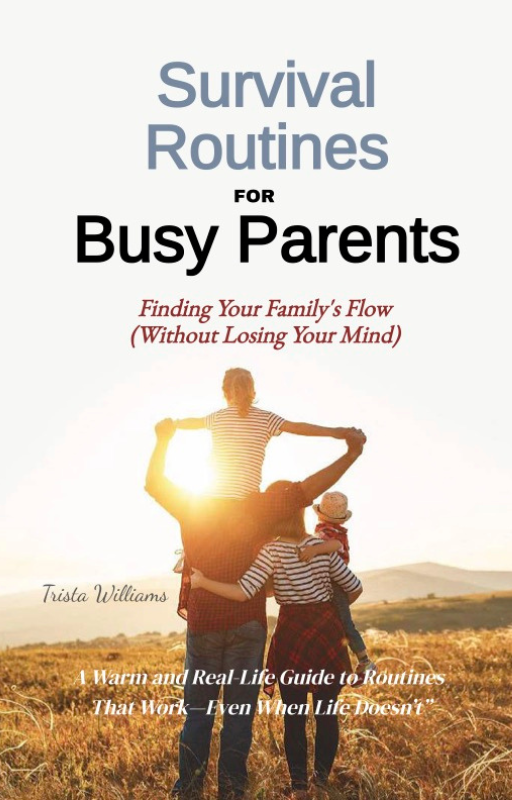





































New! Comments
Have your say about what you just read! Leave me a comment in the box below.